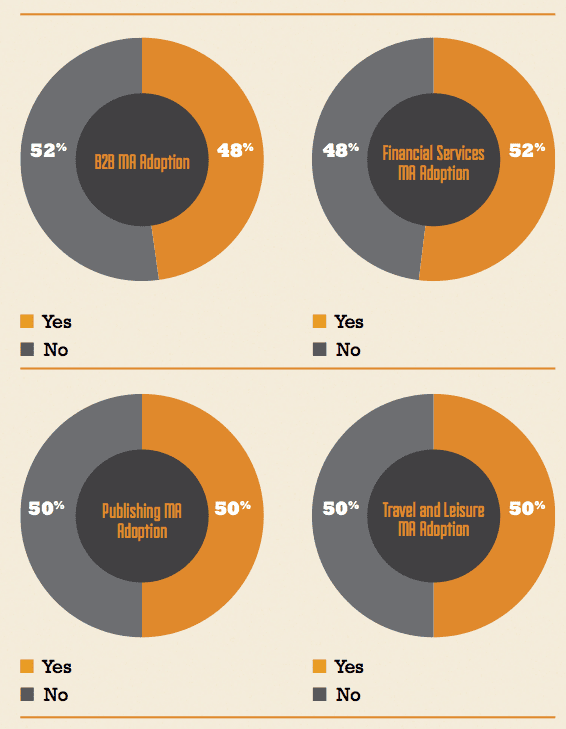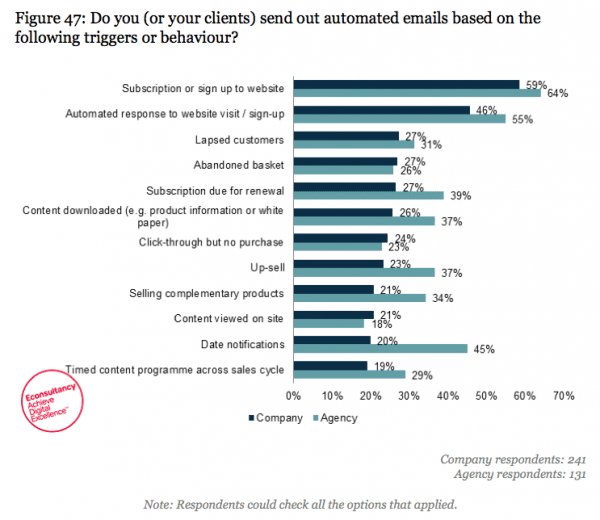A definition of Marketing Automation in 2014
Have you noticed that there’s a lot more discussion of how marketing automation can be used by businesses in 2014? Many email marketing service providers (ESPs) are repositioning their services as marketing automation platforms and at the same time, customer relationship management (CRM) systems are including marketing automation and Big Data features as part of their cloud platform services.
As I speak with marketers at different businesses I find that there is varying understanding of what marketing automation means and I'm often asked to define it’s scope. So, in this post I have outlined some of the main features as I see it.
Automated, personalised email sequences are a key feature of Marketing Automation
In reality, the automation concept is not new, for example, automated email sequences are a key feature of marketing automation that have been available for at least 10 years in many capable ESP platforms. An example of an automated email sequence is a welcome programme where a series of emails are sent to new subscriber such as a prospect or sequence. A more advanced welcome sequence will include dynamic content in panels with creative and relevant targeted for different segments.
Marketing automation platform providers no doubt see a big opportunity since research often shows surprisingly low levels of adoption of marketing adoption. I recently chaired a roundtable for RedEye and TFM&A Insights exploring the benefits and adoption where we reviewed this new 2014 Marketing Automation research that showed that across different sectors, the level of adoption remains at 50%.

This mirrors results from the recent Econsultancy-Adestra email marketing census which has shown a surprisingly low-level of adoption of automated email sequences, one of the key features of marketing automation over the years. When you drill down into the details it seems the 50% figure above is for quite basic use of Marketing Automation.
As expected, most companies have an automated response on registration (although even this is surprisingly low). But lifecycle sequences and emails prompted by viewing content on a site are below one quarter. This really shows that marketing automation is in its infancy.

A definition of marketing automation
Understanding the scope of marketing automation is essential to getting the most from it, both when selecting a marketing automation system, but also in creating a plan to feature marketing automation.
In the Smart Insights Marketing Automation Best practices guide, Jordie van Rijn and I define marketing automation
"“Marketing Automation enables businesses to automate customer communications activities as part of the marketing and sales process. The use of marketing automation services makes new, more sophisticated, processes and relevant communication and experiences possible across a range of touchpoints across the customer lifecycle.
More relevant, contextual experiences and offers promise an increase in return-on-investment from customer communications and increased efficiency in marketing teams with time savings from manual campaign activities”.
This definition shows the broad scope and benefits of marketing automation. Let’s now look at the key features. We identify 10 for simplicity starting with the features of marketing automation related to the different touchpoints.
- 1. Automated personalised messaging sequences featuring dynamic content and response assessment. We gave the example of a welcome sequence, but marketing automation will include communications across the lifecycle. Traditionally messaging is via email, but contact may be by mobile SMS, app push notification or voice. The messaging service should assess response and interactions generated at the individual level to help with future follow-up.
- 2. Website and mobile personalisation and response assessment.
Relevant, contextual, personalised messages can also be delivered via messages to prospects and customers as they browse desktop and mobile sites and apps. Response to personalised creative and offer should also be monitored for assessing intent to purchase and subsequent follow-up.
Automated emails can potentially become much more relevant if they’re based on actions that consumers take on a site. For example searching for a product or browsing a product category are ripe for follow-up emails if a purchase doesn’t occur.
- 3. Social media integration and personalisation. Social media are another key customer touchpoint today both on desktop and mobile. Traditionally, social media status updates are more difficult to personalise, but the use of social sign-in makes it possible to integrate social media with the data capture from traditional CRM
- 4. Point-of-sales integration and personalisation. Where purchase occurs online, at a checkout in-store or by phone, these transactions should also be integrated into the marketing automation system.
- 5. Lead capture. Marketing automation systems will enable prospect or customer details and profile information to be captured through online forms, usually in return for access to free content such as a whitepaper download or a webinar.
- 6. Lead scoring. This is a key aspect of lead management, it involves assessing customer likelihood to purchase based on their disclosed preferences and analysis of purchase intent based on their behaviour.
- 7. Lead management and sales workflow. Human intervention to contact prospects is involved in many businesses with high value products which are complex decisions for consumers. Marketing automation enables information about prospects to be passed and prioritised for action using a workflow.
- 8. Campaign management. Management of marketing campaigns at a higher-level of planning can also be a feature of Marketing Automation systems. This generally involves scheduling of automated messages, but it can also include scheduling of the launch of content and paid media for different waves of a campaign on a campaign timeline.
- 9. Customer service management. The core focus of Marketing Automation is managing outbound communications like emails and phone contact. But there is also scope for automating delivery of customer service both for prospects and customers. This can include routing of inbound customer enquiries from contacts forms and phone. The creation of online web self-service desks which can also help here since this can help customers find the product information they need and so reduce the need for other forms of contact.
- 10. Integrated customer and campaign intelligence and analytics. Gaining a “360 degree customer view” has long been the aim of CRM systems, and this requirement is at the heart of marketing automation too. Customer data on their profiles, behaviours across all channels and touch points, campaign response and sales all needs to be integrated. In larger businesses, centralisation into a data warehouse will be used for analysis with Big Data techniques promising creation of insight to improve targeting.
So that's how I see it! You?
Previously we published a more visual infographic in our post "What is Marketing Automation" which gives a different and quicker to scan definition:











